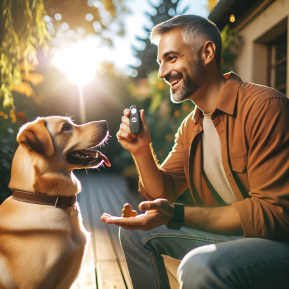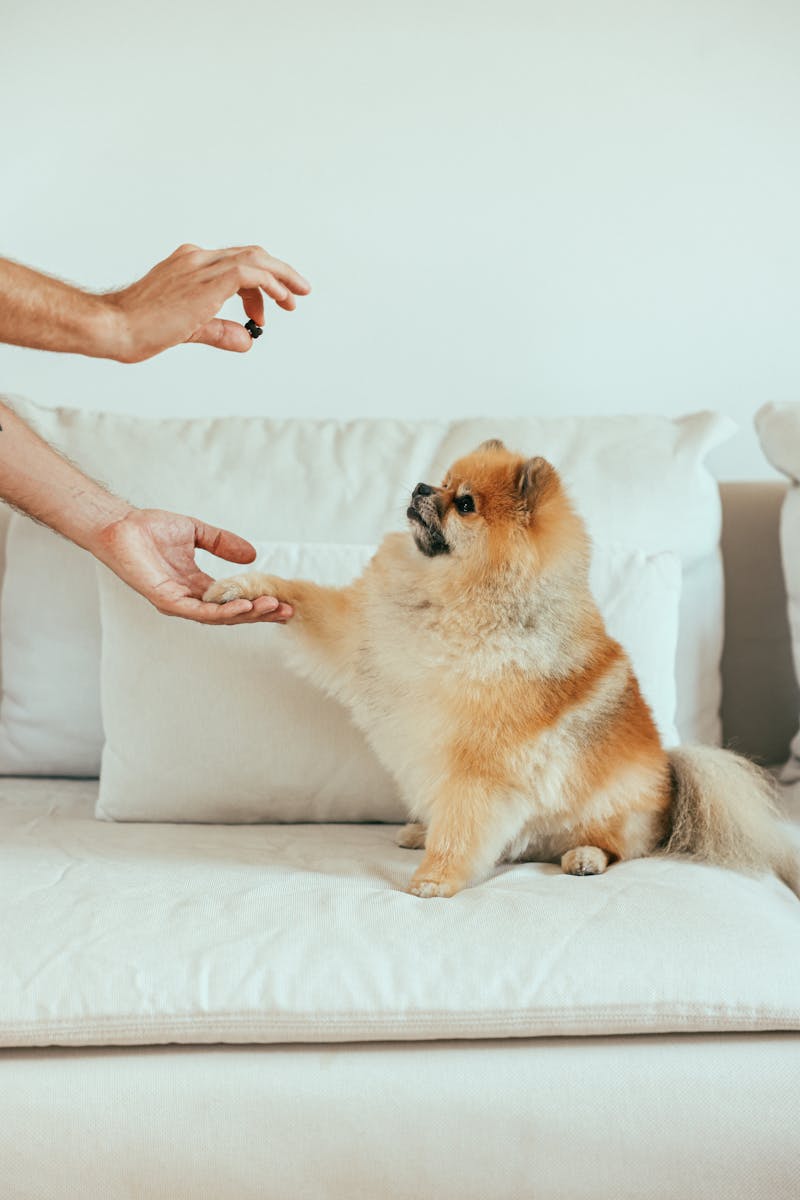Common Training Myths Debunked: What Every Pet Owner Should Know
Understanding Training Myths: The Importance of Facts in Pet Training
When it comes to training our furry friends, it’s easy to fall into the trap of misconceptions. Training myths are prevalent, often perpetuated by anecdotal experiences or outdated practices. Relying on facts instead of folklore is crucial for effective pet training. Myths not only impair a pet’s behavior but can also damage the relationship between the owner and their beloved animal. In this blog post, we will explore common training myths, delve into how they can affect your pet’s behavior, and provide facts that foster a stronger owner-pet bond.
What Are Training Myths?
Training myths are commonly held beliefs about pet behavior and training methods that are misleading or incorrect. These misconceptions can stem from traditional practices, media portrayals, or simply, misinformation passed on through word of mouth. Unfortunately, these myths can lead to inappropriate training strategies, creating confusion for both the owner and the pet.
Here are a few common training myths:
- Myth #1: “You can’t teach an old dog new tricks.”
- Myth #2: “Alpha rolling ensures dominance.”
- Myth #3: “Ignoring a behavior means it will go away.”
While these myths may have some grain of truth in certain contexts, they fail to address the nuances of pet psychology and behavior.
The Impact of Misconceptions on Pet Behavior
Misconceptions Lead to Misguided Methods
When you rely on outdated or incorrect methods of training, you risk exacerbating behavioral issues rather than fixing them. For instance, if you believe that an aggressive dog must be suppressed through dominance techniques, you may inadvertently increase their anxiety and aggression rather than calming them down. Instead, modern training emphasizes positive reinforcement, which builds trust and encourages desired behaviors.
Strained Relationships
Training myths can also harm the owner-pet relationship. If an owner employs ineffective methods, their pet may become confused, fearful, or even resentful. This can create a vicious cycle where poor communication leads to further behavioral problems, and the owner becomes increasingly frustrated. A happy and well-adjusted pet is one that feels secure in their environment and confident in their relationship with you.
Case Study: Aggressive Barking
To illustrate the impact of training myths, consider a scenario where an owner believes that scolding their dog will curb aggressive barking. Instead of addressing the root cause of the barking, such as fear or a lack of socialization, the dog may become increasingly anxious, leading to more aggression. Employing a positive reinforcement approach – rewarding calm behavior when someone approaches the house instead of punishing barking – can effectively shape behavior and improve the pet’s emotional well-being.
Debunking Common Training Myths with Facts
Myth #1: “You Can’t Teach an Old Dog New Tricks”
Fact: Age does not determine a dog’s ability to learn. Older dogs might take a little longer to pick up new commands or tricks compared to younger ones, but with patience and consistency, they can learn just as effectively. New experiences can even help keep their minds sharp.
Myth #2: “Alpha Rolling Ensures Dominance”
Fact: The alpha theory suggests that dogs need to understand their place in the pack through dominance-based techniques. However, this approach often leads to fear-based responses. Modern behaviorists emphasize that dogs are social learners who thrive in environments of cooperation and trust rather than fear and submission.
Myth #3: “Ignoring Bad Behavior Will Make It Stop”
Fact: While some behaviors do need to be ignored (like attention-seeking antics), behaviors driven by stress, fear, or anxiety require proactive management. If your dog is barking out of excitement or anxiety, addressing those triggers and using positive reinforcement for calm behavior is essential to effectively help them learn.
Actionable Tips for Effective Pet Training
- Educate Yourself: Invest time in learning about animal behavior and training techniques. Books, webinars, and classes led by certified trainers can be incredibly beneficial.
- Focus on Positive Reinforcement: Use treats, praise, and toys to reward your pet for good behavior. This not only encourages desired behaviors but also makes training an enjoyable experience.
- Be Patient and Consistent: Pets thrive on routine and predictability. Be consistent with commands and rewards, and practice regularly to reinforce what they’ve learned.
- Socialize and Expose: Introduce your pet to different environments and people progressively. This helps them become well-adjusted and reduces problematic behaviors stemming from fear or anxiety.
- Seek Professional Help: If you’re facing persistent behavior issues, consider hiring a professional trainer or behaviorist who uses science-based, humane training methods.
Conclusion: Training with Confidence
Understanding and recognizing training myths is vital for effective pet training. By basing our training methods on facts instead of misconceptions, we create an environment of understanding, trust, and respect between us and our pets. The bond we share becomes stronger, nurturing a happier, healthier life for both our pets and ourselves.

Myth #1: Dogs Only Obey When Food is Involved
When we think about dog training, one of the most common perceptions is the belief that dogs will only respond to commands when a food reward is at stake. Often reflected in the saying, “You can’t teach an old dog new tricks,” this myth oversimplifies the intricate relationship between dogs and humans. While food rewards are indeed powerful in motivating dogs, they are by no means the only currency in the world of canine behavior. Understanding various motivations that can affect a dog’s behavior during training is crucial for fostering a deeper bond with your pet.
The Role of Trust and Affection in Training
At the core of effective training is the relationship you cultivate with your dog, built on trust and affection. Research shows that dogs are instinctively social creatures that thrive on companionship and positive reinforcement. When you consistently show love and establish trust, your dog is more likely to respond to your cues, whether or not food is present.
For example, a dog that feels safe and cherished is more inclined to obey commands, showing a willingness to engage in training exercises without relying solely on treats. This can manifest in various scenarios, such as:
- Recall Training: A dog that enjoys spending time with its owner is more likely to come back when called, even if there’s no food reward.
- Social Interaction: Positive interactions with other dogs or people can motivate your dog to behave appropriately, reinforcing desired behaviors through social rewards.
Exploring Different Types of Rewards
While many people consider food as the gold standard for training rewards, it’s important to recognize that dogs respond to various forms of motivation. Here’s a breakdown of different types of rewards and their effectiveness:
- Verbal Praise: Simple affirmations like “Good dog!” or enthusiastic tones can powerfully reinforce desired behavior. Many dogs thrive on verbal encouragement, enjoying the vocal connection to their owner.
- Playtime: Incorporating games or toys into training can serve as a fantastic motivator. For instance, allowing a dog to play fetch after successfully obeying a command can be a fulfilling reward that promotes good behavior.
- Physical Affection: Sometimes, a pat on the head or a good scratch behind the ears fulfills a dog’s desire for connection. This kind of affection can reinforce training without the need for food.
- Freedom and Exploration: Allowing a dog to explore new environments during training sessions can also serve as a reward, enhancing their eagerness to learn as they discover and experience outside stimuli.
Recognizing Different Motivational Triggers
Understanding that each dog is unique means recognizing the diverse motivators that can affect their behavior. Factors such as breed, age, personality, and past experiences all contribute to what motivates a dog. Here are some points to consider:
- Breeds with High Work Ethics: Certain breeds, like Border Collies or German Shepherds, are driven by challenge and mental stimulation rather than just food. Engaging them with puzzle toys or agility training can spark their enthusiasm.
- Age Considerations: Puppies and younger dogs are often more food-focused due to their rapid growth and high energy levels. However, as dogs mature, their motivations may shift towards social interaction or play.
- Environmental Influences: A dog surrounded by distractions may respond much differently than in a calmer environment. Training under varied conditions and using appropriate motivators can help reinforce lessons more effectively.
Actionable Tips for Balancing Rewards in Training
- Assess Your Dog’s Interests: Pay attention to what makes your dog excited. It could be their favorite toy, a game of tug-of-war, or simply time spent on your lap.
- Incorporate Variety: Mix up your training rewards to keep your dog engaged. Alternate between food treats, toys, and praise to maintain their interest.
- Practice Before Mealtime: To leverage the power of food rewards, practice commands before mealtime when your dog is more motivated to earn a treat.
- Create a Reward Schedule: Develop a system where high-value rewards (like special treats) are provided less frequently, encouraging your dog to strive harder for those special instances, while lower-value rewards are given more often.
- Celebrate Non-Food Achievements: Make it a point to celebrate when your dog obeys commands without obvious rewards, reinforcing the idea that there are many paths to praise and affection.
Conclusion: Embracing a Holistic Approach
Understanding that dogs are more than just treat-driven creatures allows pet owners to cultivate a well-rounded training experience. By fostering trust, employing various motivational techniques, and recognizing the individual needs of each dog, you can significantly enhance your training efforts. Remember, effective training transcends the food bowl, evolving into a partnership built on respect and affection.

Myth #2: “You Can’t Teach an Old Dog New Tricks”
Fact: Age does not determine a dog’s ability to learn. Older dogs might take a little longer to pick up new commands or tricks compared to younger ones, but with patience and consistency, they can learn just as effectively. New experiences can even help keep their minds sharp.
Understanding the Potential of Senior Dogs
Many pet owners mistakenly believe that once a dog reaches a certain age, they become set in their ways, impervious to new training techniques. However, studies have shown that older dogs are fully capable of adapting and learning new behaviors. In fact, the cognitive abilities of dogs can continue to develop well into their senior years. By breaking this age-centric stereotype, we can unlock the vast potential that lies within our older companions.
- Cognitive Function and Learning: Research indicates that while older dogs may have slower cognitive processing speeds than younger dogs, their capacity for learning new tricks remains intact. Engaging their brains through training can even enhance their cognitive function. Tasks that challenge them, such as learning new commands or engaging in puzzle toys, can stimulate their minds and keep them sharp.
- Unique Benefits of Training Senior Pets: Training older dogs comes with its unique set of advantages:
- Calm Demeanor: Senior dogs are often calmer and more focused than puppy counterparts. Their mature personalities enable them to better absorb training without the exuberance or distractions that younger dogs might exhibit.
- Experience and Understanding: Older dogs come with a wealth of life experience. They often understand human cues and commands better because they have been exposed to various situations throughout their lives, allowing them to learn more quickly than one might expect.
- Health and Exercise: Training can help improve a senior dog’s physical health. Engaging them in regular mental and physical activities can ward off obesity and its related health concerns. Gentle training exercises can be great alternatives to reduce weight and encourage physical activity, keeping them healthy in their golden years.
Tips for Training Older Dogs
If you’re considering teaching your senior dog some new tricks, here are some actionable tips that guarantee effective learning experiences:
- Start Slow: Approach training sessions with patience. Older dogs may need additional time to grasp commands. Begin with simple commands and use slow, positive guidance.
- Use Positive Reinforcement: Reward-based systems work wonders for dogs of any age, but they are particularly effective with older dogs who appreciate encouragement. Use treats, affection, and praise to motivate your senior dog.
- Short Sessions: Keep training sessions brief — about 5-10 minutes — to prevent your dog from becoming fatigued or overwhelmed. You can train multiple times a day to reinforce learning without exhausting your pet.
- Make It Fun: Engage your dog with fun, interactive training games. Incorporate play into your sessions, such as hiding treats for them to find or incorporating their favorite toy into the training routine.
- Be Observant: An older dog may have specific physical limitations or discomforts. Pay attention to your dog’s physical condition, and adjust your training methods accordingly to ensure they’re comfortable.
- Explore New Tricks: When choosing new tricks, pick activities that appeal to your dog’s interests. If they love to sniff, consider scent work; if they enjoy interacting with people, learning to greet visitors politely may be a good option.
Success Stories: Senior Dogs Learning New Tricks
Consider the story of Bella, a 10-year-old Labrador Retriever, who was adopted from a shelter. Her new owner believed in the “old dogs can’t learn” myth but decided to challenge this stereotype. Bella learned foundational commands like “sit” and “stay” within weeks. Even more impressive, she picked up new tricks, such as rolling over and playing fetch, that not only strengthened her bond with her owner but also enriched her quality of life.
Another notable example is Max, an 11-year-old Beagle who was taught to balance small treats on his nose and wait for the command to eat them. This exercise kept him mentally engaged and added some fun to his daily routine. With patience and love, Max’s owner transformed him from a couch potato into an active and excited learner.
Conclusion: Embrace the Journey with Your Senior Dog
Training does not have an expiration date. The myth that older dogs cannot learn new tricks is not only outdated — it can also rob senior dogs of opportunities for growth and enrichment. Embracing the life experiences of older dogs, with patience and proper techniques, can pave the way for wonderful new experiences for both them and their owners.

Myth #3: Positive Reinforcement is Bribery
When discussing positive reinforcement in pet training, a common misconception arises: the idea that rewarding a dog for desired behavior is essentially a form of bribery. This myth can seriously impact how pet owners approach training, leading to the belief that if they offer treats or praise, they’re merely trying to “buy” good behavior. However, understanding the true nature of positive reinforcement reveals its role in fostering a solid bond between owner and pet. Let’s explore this misconception and how positive reinforcement, rather than being a tool of bribery, is integral to creating a trusting and respectful relationship.
Understanding Positive Reinforcement
Positive reinforcement involves offering a reward following a desired behavior, which serves to increase the likelihood that the behavior will be repeated in the future. This reward can range from treats and toys to verbal praise or affection. The intention is not to manipulate the pet but to encourage a specific action that the pet owner appreciates.
When approached correctly, positive reinforcement is far from bribery. It is a method of communication that signals to the pet what is expected and desired. Because animals naturally seek pleasurable experiences, providing rewards for good behavior means tapping into their instincts in a constructive way.
Why Positive Reinforcement is Beneficial
- Builds Trust and Confidence: Rather than instilling fear or anxiety, positive reinforcement nurtures confidence in pets. When dogs receive rewards for good behavior, they begin to understand that their actions will lead to positive outcomes. This builds not only their self-esteem but also the trust they have in their owner. When pets feel secure and understood, the bond between them and their owner deepens.
- Encourages Desired Behaviors: The right application of positive reinforcement effectively shapes behavior. For instance, if a dog learns that sitting quietly during dinner time leads to praise and perhaps a tasty treat, they become more likely to repeat that behavior rather than disruptive actions like begging. This method encourages learning through growth rather than frustration or punishment.
- Positive Social Interactions: In addition to basic commands, behavioral issues can be tackled using positive reinforcement strategies. For example, a shy dog that gets offered treats when approached by new people learns to associate interactions with positive experiences. This not only reduces anxiety but also fosters social skills, allowing both the owner and pet to enjoy a broader range of interactions.
Supporting Research and Studies
Various studies have examined the effectiveness of positive reinforcement in training. A key study published in the journal Animal Cognition found that dogs trained with positive reinforcement methods displayed fewer stress-related behaviors than those subjected to aversive training techniques. In training environments where animals are treated with respect and rewarded for their accomplishments, both dogs and their owners exhibit increased satisfaction and improved performance.
Furthermore, research by the Journal of Veterinary Behavior emphasizes that positive reinforcement leads to more effective learning outcomes and a more pleasant training experience compared to punishment-based methods. These findings not only validate the effectiveness of positive reinforcement but also highlight the importance of treating pets as companions whose happiness matters.
Common Misunderstandings About Bribery
The belief that positive reinforcement equates to bribery likely arises from a misunderstanding of the concept. Let’s clarify a few points:
- Bribery vs. Reinforcement: Bribery typically implies a coercive action or a means of manipulation to achieve compliance. Positive reinforcement, on the other hand, is about enhancing understanding, promoting good behavior through trust, and building strong emotional bonds. It is not about giving in to demands; it’s about fostering mutual respect.
- Short-Term vs. Long-Term Effects: While a bribe may yield immediate compliance, a reinforcement approach leads to the development of intrinsic motivation in pets. When dogs learn that good behavior brings rewards, they internalize the value of those actions, leading to lasting behavioral improvements and fostering a well-adjusted pet.
- Creating Positive Associations: Dogs are keen learners. If they associate good behavior with positive outcomes, they are more likely to repeat those behaviors. The goals of training using positive reinforcement are to create an environment where the pet feels encouraged to engage in desirable behaviors naturally.
Actionable Tips for Implementing Positive Reinforcement
- Identify Effective Rewards: Pay attention to what your pet enjoys the most, be it treats, toys, or affections. Use these as rewards for encouraging specific behaviors.
- Be Clear and Consistent: Use specific cues and stick to them. Ensure that the same command consistently leads to the same behavior and reward. Clarity is crucial for effective communication.
- Timing is Everything: Immediately reward the behavior you want to reinforce to help your pet make the connection between the action and the reward.
- Gradual Changes: Start with easy tasks and gradually increase complexity as your pet becomes accustomed to responding to positive reinforcement. This progression helps build confidence and ensures ongoing engagement.
- Positive Socialization: Incorporate positive reinforcement strategies during social events or outings with your pet, like rewarding calm behavior around other dogs or people to facilitate positive experiences.
In conclusion, acknowledging and debunking the misconception that positive reinforcement is merely bribery helps paint a clearer picture of a respectful and nurturing training approach. By understanding the essence of positive reinforcement, pet owners can develop more meaningful relationships with their animals that are built on trust and cooperation.

Myth #4: Dogs Understand Human Language
When it comes to the notion that dogs can fully comprehend human language, many pet owners may find themselves unclear about the reality. This myth can lead to unrealistic expectations about canine communication and ultimately, ineffective training methods. While it’s easy to project our understanding of language onto our pets, the truth is that dogs don’t grasp the complexities of human speech in the same way humans do. Instead, they rely on a combination of cues, context, and tone to understand us better.
The Science Behind Dog Understanding
Research indicates that dogs are adept at interpreting human body language, facial expressions, and vocal tones. A study published in Animal Cognition highlighted that dogs could not only recognize specific words but also understood the emotional context behind how those words were delivered. For instance, a dog may respond to the joy in your tone when saying “walk” but may become confused if you use a stern voice. Thus, the mechanics of canine understanding are rooted in subtle cues rather than pure language comprehension.
How Dogs Learn through Cues and Context
Instead of understanding individual words, dogs are incredibly skilled at picking up on contextual cues during training and daily interactions. Here’s how this works:
- Visual Cues: Dogs will often rely on your body language. For example, if you’re excitedly pointing towards the door while saying “outside,” your dog is likely to understand that this is a cue for them to go outside.
- Consistent Commands: Dogs thrive on routine and consistency. When you provide the same command, such as “sit,” always accompanied by the same hand gesture and tone of voice, your dog begins to correlate the sound and action with the command. This association is crucial because, without consistency, confusion arises.
- Environmental Context: Dogs can learn behaviors based on the environment they are in. If you often call your dog to come inside using a specific tone when you’re home, they may respond enthusiastically. However, if you use the same command while at a park, they might be too distracted by the surroundings to respond as readily.
Practical Examples in Training
Understanding that dogs rely on cues rather than merely the words we say can greatly enhance training efforts. Here are some effective training techniques that leverage this understanding:
- Use Hand Signals: Pair verbal commands with corresponding hand signals. For example, when teaching “sit,” raise your palm slowly upwards while saying the command. This not only provides a visual cue but also reinforces the verbal command.
- Positive Reinforcement: Combine verbal praise with treats immediately after your dog follows a command. This indicates to the dog that their action is correct, regardless of language barriers. Incorporating varied praise tones can help them differentiate between commands and build excitement for training.
- Incorporate Play: Utilize your dog’s natural instincts during training sessions. If your dog likes to fetch, use the opportunity to embed commands like “bring it here” or “drop it.” The enthusiasm of play will reinforce the language associated with those actions.
- Use Distinct Cues for Different Objectives: When training behaviors such as jumping or sitting, ensure each command has a distinct tone or hand gesture. This differentiation prevents dogs from becoming confused about what is being asked of them.
- Trial and Error: Observe your dog’s response to different verbal commands and adjust accordingly. If a command is not eliciting the expected response, consider changing your tone, gesture, or how you’re delivering the command.
Conclusion: The Importance of Language Awareness in Dog Training
It’s essential to approach dog training with the knowledge that your furry friend may not understand every word you say. Recognizing that dogs interpret cues and context significantly enhances your training strategies and strengthens your bond. By being mindful of how you communicate with your dog, you foster a more effective learning environment, leading to better behavior and understanding between you and your beloved companion.

Myth #5: All Dogs Need to be Pack Leaders
The pursuit of an “alpha” or “dominant” position in a dog’s behavior has long been a contentious topic among dog trainers and pet owners alike. The idea that every dog needs a pack leader stemming from the dominant dog theory, rooted in outdated understandings of canine social structures, is misleading and, in many cases, damaging to the owner-pet relationship. Contrary to the belief that dogs require stern leadership to thrive, promoting guidance and mutual respect fosters cooperation and enhances the bond between pet and owner.
The Dominance Myth: A Misinformed Perspective
The origins of the dominant dog theory can be traced back to early studies on wolves that suggested a hierarchal pack structure. However, further research has revealed that wolves in the wild often exhibit cooperative behaviors and complex social interactions, rather than the rigid dominance dynamics originally proposed. The misconception that dogs mirror this behavior leads many owners to adopt harsh training methods in the name of establishing control, invoking unnecessary stress on both the dog and the owner.
While it’s essential for dogs to recognize their humans as leaders of the pack, this leadership should not be based on fear or hostility. Instead, it should be characterized by guidance, understanding, and support.
Promoting Cooperation Over Dominance
Rather than enforcing a top-down approach through dominant behaviors, pet training should focus on fostering cooperation. Here are some effective methods to enhance guidance and establish a trust-based relationship:
- Positive Reinforcement Techniques:
- Rewarding your dog for good behavior encourages them to repeat those actions naturally. This could include treats, verbal praise, or even playtime as incentives.
- For example, if your dog greets visitors calmly, reward them for being relaxed, reinforcing that this behavior is desirable.
- Setting Clear Boundaries with Kindness:
- Clearly defined rules provide a sense of security for your dog. However, these boundaries should be taught through gentle correction rather than punitive measures.
- Use firm but kind commands to help your dog learn what is acceptable behavior. You can also use redirection techniques to guide them away from unwanted behaviors.
- Engaging in Interactive Play:
- Playtime fosters connections and builds trust. Games like fetch, tug-of-war, or hide-and-seek not only provide mental stimulation but also promote cooperation.
- These activities help your dog learn teamwork and reinforce your role as a trusted companion without resorting to dominance.
Alternative Training Approaches
In place of traditional dominance-based methods, several modern training concepts better align with the needs of dogs and their human companions:
- Relationship-Based Training: This method emphasizes building a bond of trust and respect between you and your dog. This approach is less about control and more centered on collaboration and mutual understanding.
- Clicker Training: A tool that utilizes sound to mark desired behavior and follows it with a reward. This method can help clarify tasks for your dog, providing instant feedback and positively reinforcing good behavior while minimizing stress.
- Canine Good Citizen Programs: Enrolling your dog in such programs introduces both the dog and owner to different environments, people, and situations in a safe setting. This training method builds confidence and promotes socially acceptable behaviors.
Conclusion: Empowering Through Guidance
By refuting the dominant dog theory and focusing on guidance rather than dominance, pet owners can foster a deeper bond and a more cooperative dynamic with their dogs. Emphasizing positive reinforcement, clear expectations, and engaging play can lead to much better outcomes than traditional dominance-based methods.
As you explore these new training methodologies, consider how your approach impacts your pet’s behavior and emotional well-being.

Myth #6: Training Should be Harsh for It to Work
One of the most persistent myths in pet training is the misguided belief that harsh, punitive methods are necessary for effective results. Many dog owners worry that without incorporating strict discipline or intimidation, their pets will become unruly or untrained. However, research and real-world experiences show that humane, positive training techniques are not only effective but also foster a stronger bond between pets and their owners.
The Reality of Harsh Training Methods
The Science Behind Positive Reinforcement
Contrary to the belief that harsh training yields better results, studies consistently demonstrate the efficacy of positive reinforcement in shaping desired behaviors. Positive reinforcement involves rewarding desirable behaviors with treats, praise, or play, thereby encouraging the pet to repeat those behaviors.
- Research Findings:
- A 2016 study published in the journal Frontiers in Veterinary Science revealed that dogs trained with reward-based methods were less likely to exhibit aggressive behaviors compared to those trained with aversive techniques.
- The American Veterinary Society of Animal Behavior (AVSAB) also endorses positive reinforcement, stating that it is more effective for achieving long-term results and building trust between the dog and the owner.
- Real-World Examples:
- Dogs trained with harsh methods may suppress undesirable behaviors temporarily but often do not learn the expected behavior. For example, a dog repeatedly punished for jumping may learn to avoid jumping only in the presence of the owner, creating a false sense of obedience while still displaying the behavior in their absence.
The Benefits of Humane Training Techniques
Happier Pets Equals Better Learning
Using humane training methods not only leads to better-behaved pets but also contributes to their overall happiness and well-being. Pets trained through fear or intimidation may become anxious, fearful, and may even exhibit aggression.
- Reduced Stress: Studies show that animals trained with positive reinforcement display lower stress levels. They are more likely to feel secure and confident, leading to quicker and more effective learning.
- Increased Motivation: Pets that associate training with positive outcomes are more motivated to participate in future training sessions. This creates a feedback loop in which training becomes enjoyable rather than a chore.
Building a Stronger Bond
The relationship between a pet and its owner is pivotal in ensuring lifelong obedience and companionship. Harsh training methods can undermine this bond, while humane training strengthens it.
- Trust and Respect: When pets feel safe and loved, they are more willing to respond positively to commands. Trust forms the basis of a healthy owner-pet relationship. Rather than inducing fear, positive reinforcement promotes respect.
- Stronger Connection: Engaging in training with your pet strengthens your mutual bond. Interaction through play, treats, and praise builds a relationship rooted in understanding and companionship.
Statistics You Should Know
When statistics are evaluated surrounding training methods, the advantages of humane techniques become even clearer:
- A 2014 survey conducted by the APDT (Association of Professional Dog Trainers) found that 95% of trainers who use positive reinforcement methods report satisfactory training outcomes compared to only 45% of those using aversive methods.
- A significant 83% of dog owners experienced marked improvement in behavior following the adoption of positive reinforcement training.
Practical Tips for Implementing Humane Training Techniques
- Start Young: Begin socialization and training as early as possible to instill good habits in your puppy, making them less likely to develop behavioral issues later in life.
- Utilize Clicker Training: This method involves using a clicker to mark desirable behaviors followed by treats. It creates a clear association between the action and the reward.
- Increase the Value of Rewards: Adjust the rewards according to the difficulty of the task. For tasks that require more effort, use higher-value treats or favorite toys to motivate your pet.
- Stay Consistent: Consistency in commands and rewards is key to your pet understanding what is expected of them. Ensure all family members use the same terms and techniques.
- Celebrate Small Wins: Recognize and reward incremental progress in behavior, no matter how small. This encourages your pet along their learning journey.
Conclusion: Training Should be Positive, Not Punitive
By debunking the myth that harsh training methods are necessary for effective results, we can embrace a kinder, more humane approach to pet training. Understanding that positive reinforcement leads to happier pets establishes a foundation for a productive training experience and strengthens our bond with our furry companions.

Myth #7: You Need Professional Help for Any Behavior Problem
When it comes to addressing behavior issues in pets, many owners feel overwhelmed and uncertain. The pervasive myth that only professionals can solve behavioral problems can lead to feelings of helplessness. However, the truth is that many common behavior issues can be managed effectively by pet owners with some simple strategies and a little bit of patience. In this section, we’ll debunk the myth that you need professional help for every behavioral concern and outline practical, actionable tips that you can utilize at home.
Identify and Understand the Problem
Before attempting to resolve any behavior issue, it’s crucial to first identify what the problem is. Observing your pet closely and keeping a record of their behavior can provide insight. Here are some questions to guide you in your observation:
- What situations trigger the behavior?
- Are there particular times of day when the behavior occurs?
- What are your pet’s body language signals before the behavior occurs?
By understanding the triggers and manifestations of your pet’s behavior, you can devise a more targeted approach to address the issue.
Common Behavior Problems and Simple Strategies
Here are a few prevalent behavior issues among pets, along with actionable tips to help manage these challenges without necessarily needing a professional.
1. Excessive Barking
Excessive barking can stem from boredom, anxiety, excitement, or the need to communicate. Here’s how to manage it:
- Provide Regular Exercise: A tired dog is often a quiet dog. Regular walks, playtime, and mental stimulation can help reduce barking caused by pent-up energy.
- Teach the “Quiet” Command: Use positive reinforcement (like treats or praise) to reward your dog for being quiet on command. Once they start to grasp this concept, gradually increase the duration before rewarding them.
2. Jumping on People
Jumping is a common behavior in excited dogs, often stemming from a desire to greet people or get attention. Here’s how to curb the behavior:
- Ignore the Behavior: When your dog jumps, turn away and avoid giving them any attention until they settle down. This teaches them that jumping does not yield the desired result.
- Reward Calm Behavior: When they remain calm and keep their paws on the ground, praise and reward them to reinforce the desired behavior.
3. Destructive Chewing
Destructive chewing can signal boredom or anxiety. Here’s what you can do:
- Provide Appropriate Chew Toys: Offer a variety of safe chew toys to redirect their chewing behavior away from furniture or personal items.
- Increase Mental Stimulation: Engage your pet with puzzle toys or interactive games to reduce boredom, which can lead to chewing.
Leverage Resources for Further Education
While many behavior issues can be addressed at home, continuous education about pet behavior is invaluable. Utilize the following resources to expand your knowledge:
- Books: There are countless books available that cover dog behavior and training techniques. Look for titles authored by reputable trainers or behaviorists.
- Online Courses & Webinars: Websites like Udemy or even specific pet training platforms offer courses on dog behavior and training.
- Community Classes: Local shelters, pet stores, or training facilities often offer group classes which can be a great way for both you and your pet to learn and socialise.
Know When to Seek Help
While many behavioral issues can be managed by owners through consistent efforts, there may come a time when professional help is necessary. Consider seeking guidance from a certified trainer or animal behaviorist if:
- The behavior is severe or poses a risk to the pet or others.
- You cannot identify the root cause of the behavior despite trying different strategies.
- The behavior worsens over time or leads to other behavioral issues.
Conclusion: Confidence in Your Abilities
The myth that you must rely solely on professionals to address your pet’s behavior problems can create unwarranted anxiety and frustration for pet owners. Armed with knowledge and simple strategies, you can tackle many common behavioral challenges head-on. Remember, patience and consistency are key elements in any training endeavor.

Myth #8: Rewards Should Only Come After Desired Behavior
When it comes to effective pet training, immediate feedback plays a crucial role in reinforcing desired behaviors. A pervasive myth within the pet training community is that rewards should be delayed until after a behavior is successfully performed. This notion simply doesn’t hold up against the evidence gathered from canine psychology and behavior science. In reality, timely rewards can significantly bolster learning, making training sessions more effective and enjoyable for both pets and their owners.
The Importance of Timing in Training
Timing in training refers to the intervals between the behavior demonstrated by the pet and the subsequent reward given. Optimal timing enhances the association between the behavior and the reward, allowing pets to understand what specific action elicited the positive response. If a pet receives a reward long after the behavior, the connection may become muddled, diminishing the learning experience.
Why Immediate Feedback is Effective
- Clear Association: Pets are quick learners, and they thrive on clear cause-and-effect relationships. By delivering a reward immediately after a desired behavior, you help your pet recognize that their action led to a pleasant outcome. This immediate feedback helps solidify the learned behavior in their mind.
- Motivation to Repeat: When pets receive timely rewards for good behavior, they are more likely to repeat these actions. For instance, if a dog sits on command and immediately receives a treat, the dog is more likely to sit again in the future, associating the action with the reward.
- Boosts Confidence: Positive reinforcement encourages pets and boosts their confidence. When they understand exactly what behavior is being rewarded, they feel more secure and eager to engage in further training activities.
Practical Examples of Effective Timing
Implementing immediate reward systems in training can significantly enhance learning outcomes. Here are a few real-world examples to illustrate this point:
- Teaching Sit: When teaching your dog to sit, as soon as their bottom touches the ground, immediately praise them and give a treat. This immediate recognition will help them associate the action of sitting with receiving a reward right away. Conversely, if you wait until later to offer a reward, they may not connect the dots.
- Redirecting Bad Behavior: If your dog tends to jump on guests, instead of waiting until they’ve calmed down before showing affection, start rewarding them for keeping all four paws on the ground as soon as guests arrive. The instant reward reinforces the desired behavior in real-time, allowing for a smoother interaction.
- Clicker Training: Utilizing a clicker provides an effective way to offer immediate feedback. The sound of the click signifies precisely what behavior the pet is being rewarded for. For instance, if a dog successfully fetches the ball and brings it back, clicking and then offering a treat right away reinforces the action of fetching.
- Walking with Loose Leash: While teaching leash manners, reward your dog each time they walk beside you without pulling. An instant treat or praise when the leash is slack helps them understand that loose-leash walking is what earns them rewards.
Real-World Data on Immediate Feedback
Studies emphasize the efficacy of immediate rewards. Research has shown that timing, particularly in relation to reinforcement, is critical in animal training. When rewards were delayed by just a few seconds, studies found a significant drop in the rate of behavior acquisition. The closer the reward is given in time to the desired behavior, the quicker the learning curve, reinforcing the importance of immediate feedback in effective pet training.
Overcoming the Myth: Practical Steps Forward
To effectively utilize timing in your pet training, consider these actionable strategies:
- Be Ready: Always keep treats or rewards accessible during your training sessions. This way, you can deliver immediately without interruption.
- Minimize Delays: Aim to provide the reward within 1-2 seconds of the desired behavior. This proximity can significantly enhance the learning process.
- Use Non-Food Rewards: While treats are effective, you can also use toys or praise as immediate rewards, depending on what motivates your pet best.
- Set Clear Expectations: If you want your pet to understand a new command, practice consistency in timing and the type of reward you give. This clarity helps the learning process.
- Document Progress: Keep notes on your training sessions. Note what types of rewards are most effective, and track which methods yield the best results in terms of immediate feedback.
By debunking the myth that rewards should only follow desired behavior, pet owners can enhance their training techniques and foster a deeper connection with their furry companions. Through immediate feedback, you pave the way for effective learning, increased motivation, and a stronger bond based on clear communication and trust.

Myth #9: Training Is Only for Puppies
One of the most pervasive myths in the world of pet training is the belief that training is only necessary for puppies. Many dog owners assume that once their furry friend reaches adulthood, they’ve already absorbed all the necessary commands and behaviors. However, this misconception can lead to significant behavioral issues and a missed opportunity for companionship enrichment. Continuous training throughout a dog’s life is crucial for their emotional and mental well-being. Let’s explore why ongoing training is essential, how it benefits dogs of all ages, and actionable tips for refreshing skills at different life stages.
Why Training Is Important at All Stages of Life
Mental Stimulation
Dogs, regardless of age, thrive on mental stimulation. Puppies may require training to learn basic commands, but adult dogs benefit from continued engagement that keeps their minds sharp. Training can stimulate your dog’s cognitive functions, preventing boredom, anxiety, and problematic behaviors.
Reinforcement of Good Behavior
Consistent training helps reinforce good behavior throughout a dog’s life. For example, teaching an older dog new commands not only hones their skills but also strengthens the bond between you and your pet, fostering increased trust and respect. Plus, as dogs grow and mature, they may face new challenges or changes in circumstances that could prompt a need for updated training.
Adapting to Life Changes
As life progresses, dogs will encounter various changes – such as moving to a new home, welcoming a baby, or losing their companions. Ongoing training helps dogs navigate these transitions more smoothly, addressing behavioral issues that may arise during times of stress or change.
Tips for Refreshing Skills at Different Life Stages
For Puppies (0-12 Months)
- Foundation Skills: Focus on the basics, such as sit, stay, and come. Use positive reinforcement techniques, rewarding with treats, praise, or playtime.
- Socialization: Expose your puppy to different environments, people, and animals to help them develop confidence and reduce fear-based behaviors.
- Short Sessions: Keep training sessions brief (5-10 minutes) to maintain their attention. Frequent, short training periods help reinforce learning without overwhelming them.
For Adolescents (1-3 Years)
- Advanced Commands: Introduce more challenging commands, such as “leave it” or “place.” This supports their transition into becoming obedient adults.
- Impulse Control: Incorporate exercises that promote impulse control like waiting for food or not jumping on guests. This helps to manage their energy levels and encourages good manners.
- Regular Reinforcement: Continue to use positive reinforcement to encourage compliance and engagement. Make training fun by incorporating games like fetch or hide-and-seek to keep them excited.
For Adults (3-7 Years)
- Problem-Solving: Engage your dog with puzzle toys or learn new activities, such as agility training. This keeps their minds sharp and can help mitigate common issues with boredom.
- Continuing Socialization: Maintain social interactions by participating in group training classes or dog meet-ups. This reinforces good behavior in various environments.
- Review Basic Commands: Don’t forget to refresh the basic commands consistently. Use them in everyday scenarios to keep skills sharp.
For Senior Dogs (7+ Years)
- Gentle Refreshers: Senior dogs may require gentle, positive training sessions that don’t stress them. Use low-impact activities that accommodate their physical abilities.
- Cognitive Exercises: Consider memory games or scent work to stimulate their cognitive functions. Simple problem-solving tasks can help maintain mental health.
- Focus on Comfort: Adapt training and exercise regimens to ensure they remain comfortable. The goal is to keep them engaged while ensuring their physical well-being.
Conclusion: A Lifelong Journey
Training is not just a phase; it’s a lifelong commitment that fosters a loving, respectful bond between dog and owner. By dismissing the myth that training is only necessary for puppies, we open the door to ongoing growth and mutual understanding. The techniques you employ at each stage can profoundly impact your dog’s behavior, happiness, and ability to adapt to life’s changes.

Myth #10: Short Training Sessions Aren’t Effective
When it comes to training our pets, there’s a prevailing belief that longer training sessions are inherently better. This misconception can lead pet owners to spend unnecessary hours trying to instill commands or correct behaviors, all in the name of ensuring effective training. However, this myth does little to account for the realities of attention spans, engagement, and learning retention. Let’s dive deeper into why shorter, focused training sessions can yield better results and foster an improved relationship with your furry companion.
The Science Behind Attention Spans and Learning
Research has shown that human attention spans have dramatically decreased — a trend that likewise translates to our pets. Dogs, much like humans, benefit from shorter bouts of learning with frequent breaks. Studies consistently indicate that attention spans wane significantly after about 10-15 minutes of focused learning.
- Statistical Insight: Neuroscience research suggests that retention drastically drops after 20 minutes, irrespective of whether the learner is human or canine. This implies that trainers are often fighting an uphill battle if they expect their pets to remain engaged in training sessions lasting longer than this timeframe.
Benefits of Short Training Sessions
- Increased Retention: Shorter training sessions allow pets to focus better on the task at hand. This improves understanding and retention, making it easier for them to remember commands and learn new behaviors.
- Enhanced Engagement: Dogs can easily become bored or distracted during extended sessions. A brief, focused session helps maintain their enthusiasm and interest, creating a more positive and enjoyable learning experience.
- Reduced Stress for Both Pet and Owner: Longer training sessions can lead to fatigue and frustration for both parties. Short, dynamic training episodes can alleviate this stress and encourage a more harmonious atmosphere.
Real-World Examples of Effective Short Training
Many pet trainers successfully use the technique of brief training sessions to great effect. For example, professional dog trainers often recommend 5-10 minute sessions, multiple times a day, rather than a single lengthy session. This approach allows trainers to reinforce positive behaviors consistently and address any misunderstandings immediately while the pet’s mind is still fresh.
- Example: A dog that struggles with basic commands like “sit,” “stay,” or “come” can benefit from practicing each command for just five minutes throughout the day, rather than trying to cram them all into one extended session. This method not only caters to the dog’s attention span but also allows for immediate reinforcement and corrections.
Practical Tips for Implementing Short Training Sessions
- Schedule Consistent Times: Set aside specific times throughout the day, ideally during moments of high energy and alertness, for short training sessions.
- Mix Commands: Rotate through different skills so your pet doesn’t become bored. For instance, practice a mix of basic commands, tricks, or even agility exercises in combination.
- Leave Room for Play: Incorporate play into your training sessions. This can help your pet associate learning with fun, enhancing their overall enjoyment and eagerness to participate.
- Keep Sessions Goal-Oriented: Focus on achieving one specific behavior or command during each session. This clarity allows your pet to channel their energy effectively and improves the chances of success.
- Evaluate and Adapt: Observe your pet’s behavior to determine the ideal session length. If they appear distracted or disengaged, it might be time to shorten your training.
Conclusion: Training with Confidence
By understanding that shorter training sessions can lead to more effective learning and engagement, we can adapt our methods to better suit our pets’ needs and learning styles. Striking the right balance between duration and focus fosters an environment where both pets and owners can thrive. As you implement shorter training sessions, remember that the goal is to build trust, understanding, and a stronger bond with your furry friend.

Myth #11: All Breeds are Equal in Trainability
While many pet owners might believe that all dog breeds are equally trainable, this is far from the truth. Each breed comes with its own set of characteristics, instincts, and tendencies that significantly influence their trainability. By understanding these breed-specific traits, you can tailor your training approach to fit your dog’s unique needs, leading to a more rewarding and effective training experience.
Understanding Breed Characteristics
Different dog breeds were developed for various purposes, from herding and hunting to guarding and companionship. These inherent traits play a crucial role in how they respond to training methods. For example, herding breeds like Border Collies and Australian Shepherds are highly intelligent and eager to work, making them generally more trainable compared to more independent breeds like the Basenji or Afghan Hound.
Key characteristics influencing trainability include:
- Intelligence: Breeds like the Poodle and German Shepherd are known for their intelligence and ability to learn quickly. Conversely, some breeds might not possess the same eagerness or capacity for learning, either due to lower intelligence or a less cooperative temperament.
- Motivation: Understanding what motivates your dog is essential. Some breeds may be food-driven, while others respond better to toys or praise. Tailoring your training method according to your dog’s motivation can drastically improve their willingness to learn.
- Energy Levels: High-energy breeds require more physical and mental stimulation. Breeds such as Retrievers or Terriers might need action-packed sessions to keep their focus, whereas a more relaxed breed like the Bulldog might need shorter training intervals.
- Social Tendencies: Many breeds are social and thrive on human interaction, while others may be more aloof. For instance, the Boxer is known for its friendly and social nature, which can facilitate easier training. In contrast, breeds like the Shiba Inu might be more stubborn and require additional patience.
Real-World Examples of Breed Trainability
Understanding the nuances of breed-specific characteristics is crucial. For instance, trainers often find that working breeds, such as the Belgian Malinois, excel at obedience training and complex tasks because of their strong work ethic. These breeds often enjoy challenges and will be more enthusiastic about learning new commands.
On the opposite end of the spectrum, consider the Basset Hound. This breed is often less inclined to respond to commands quickly due to its independent nature. Instead of relying on traditional training techniques, owners may find success using more playful and relaxed training methods that allow the Basset Hound to enjoy the process at its own pace.
Here are some actionable tips for training different breeds effectively:
- Adapt Your Training Style: Tailor your approach based on your dog’s unique characteristics. Utilize high-energy play and challenges for high-drive breeds, while employing patience and gentle encouragement with more independent types.
- Utilize Varied Methods: Incorporate different training techniques to find what resonates with your dog. Use toys, interactive play, or engaging tasks that allow your breed’s specific traits to shine.
- Set Realistic Expectations: Understand that different breeds will learn at different paces. For example, Labradors might grasp commands quickly, while a more obstinate breed may take longer. Be patient and adjust your expectations accordingly.
- Incorporate Ongoing Training Sessions: Regular training, even with breeds that learn quickly, is essential to reinforce existing commands and maintain discipline. For stubborn breeds, make the training fun and engaging to keep their interest.
- Recognize When to Seek Help: If you find your training is stagnant, don’t hesitate to reach out to a professional trainer who understands breed behaviors and can provide personalized training strategies.
The Importance of Breed-Specific Training
Understanding the differences in trainability between dog breeds is essential for any pet owner. This knowledge not only aids in developing effective training strategies but also fosters a stronger bond between you and your dog. By respecting and adapting to your dog’s innate strengths and weaknesses, you can create a more rewarding learning environment, ensuring that both you and your pet thrive together.
By debunking the myth that all breeds are equal in trainability, you elevate your training efforts and enrich your relationship with your furry friend.

Myth #12: “Dogs Train Themselves”
Many pet owners harbor the belief that dogs are intuitive creatures that will naturally learn good manners and appropriate behaviors without any guidance. This myth suggests that dogs will simply pick up the rules of living in a human household through observation and experience. However, while dogs are incredibly smart and adaptable, this myth could not be further from the truth. The reality is that proactive training is essential for shaping desired behaviors in dogs effectively.
The Fallacy of Natural Learning
Dogs are not born with an inherent understanding of human expectations or social norms. Instead, they rely on their owners to provide guidance, structure, and consistency. Without training, dogs may develop habits that are not only undesirable but can also be detrimental to their overall well-being and to the owner-pet relationship.
For example, a puppy left unchecked might develop the habit of jumping on visitors as a friendly greeting. While this behavior is well-intentioned, it could lead to misunderstandings and discomfort for guests and could even turn into potential safety issues if the dog knocks someone over.
Common Unwanted Behaviors and the Importance of Training
Without proactive training, dogs can easily fall into several common unwanted behavior patterns. Here are a few examples:
- Barking Excessively: Dogs can bark for a variety of reasons—excitement, boredom, fear, or to express needs. Without guidance, they may not learn how to communicate appropriately, resulting in chronic barking that can be disruptive both at home and in the neighborhood.
- Destructive Chewing: Puppies and even adult dogs may resort to chewing furniture, shoes, or other household items if they lack appropriate chew toys or mental stimulation. This behavior often stems from boredom or anxiety and can lead to significant property damage.
- Pulling on Leash During Walks: Dogs that haven’t been trained on proper leash etiquette can turn walks into tug-of-war sessions. This not only makes walks unpleasant but can also be dangerous for both the dog and the owner.
- Jumping on People: While many dogs display affection by jumping, this behavior can be bothersome or intimidating to guests. Without consistent training to encourage alternative greetings, the dog may continue this pattern well into adulthood.
- Resource Guarding: If a dog feels anxious about losing access to food, toys, or even their owner’s attention, they may guard these resources, leading to defensive behaviors. Early socialization and training can help mitigate this issue.
Proactive Training: The Key to a Well-Behaved Dog
To cultivate well-mannered and socially adept companions, proactive training is indispensable. Here are actionable tips for implementing effective training:
- Start Early: Begin training your dog as soon as you bring them home. Early socialization during the critical development period (roughly between 3 and 14 weeks of age) can significantly improve a dog’s comfort level with new experiences and environments.
- Create a Consistent Routine: Rules and training cues should be consistent across all family members. When everyone is on the same page, it minimizes confusion for the dog and reinforces learning.
- Use Positive Reinforcement: Reward desired behaviors with treats, praise, or play. This encourages your dog to repeat those behaviors in the future. For instance, if your dog remains calm and doesn’t bark as the mailman approaches, reward them with a treat.
- Provide Mental Stimulation: Engage your dog with puzzle toys, interactive games, or basic obedience training to keep their minds active. A mentally stimulated dog is less likely to engage in unwanted behaviors born from boredom.
- Engage Professional Trainers: If you struggle to see progress in behavior, consider reaching out to a certified professional dog trainer or a behaviorist. They can tailor their methods to your dog’s specific needs, using science-based, humane techniques.
Real-World Example: A Case of Barking
Let’s consider the case of Max, a friendly Labrador retriever who barked incessantly every time someone approached the front door. His owners thought that it was simply part of his nature to alert them of visitors. However, this behavior led to strained relationships with neighbors and awkward encounters with guests who felt intimidated.
With the help of a professional trainer, Max’s owners learned that the barking was rooted in uncertainty and excitement. By incorporating structured training sessions, rewarding calm behavior, and managing his excitement, they transformed Max into a well-mannered greeter who happily sits when someone arrives at the door, creating a positive atmosphere for everyone involved.
Conclusion: Training with Confidence
By dispelling the myth that dogs will train themselves, we can embrace the proactive measures necessary for effective pet training. Understanding that dogs thrive in structured environments allows us to be better guardians and companions. When we actively engage in the training process, we foster a deeper bond built on trust and respect.

Myth #13: Correction is Necessary for Learning
When it comes to training pets, the belief that correction is essential for learning can be deeply ingrained. Many pet owners insist that correcting undesirable behaviors – whether through verbal reprimands, physical corrections, or disciplinary techniques – is the only effective way to instill good behavior in their furry friends. However, research and experience from modern trainers suggest that the approach of guiding rather than correcting can lead to more positive outcomes.
Understanding the Flaws of Traditional Correction
- Fear and Anxiety: The primary issue with using correction as a training method is that it may instill fear or anxiety in pets. A dog that is corrected for growling, for example, may become more anxious, leading to more aggressive behavior. Instead of feeling secure and confident, the pet might feel the need to defend itself or retreat, resulting in a breakdown of communication between pet and owner.
- Misunderstanding the Behavior: Correction rarely addresses the underlying cause of undesirable behaviors. For instance, a dog that barks excessively may not simply be acting out; he could be anxious, bored, or fearful. Utilizing corrections without understanding these triggers often leads to temporary changes in behavior at best, ignoring the root cause that needs to be resolved for lasting improvement.
- Loss of Trust: When corrections are part of a training regimen, trust can erode between the pet and the owner. Pets viewed correcting as punishment may become less willing to engage in training, fearing negative responses for mistakes. In contrast, a guiding approach promotes understanding and strengthens the human-animal bond.
Techniques Focused on Guidance Rather than Correction
- Positive Reinforcement Training: This method focuses on rewarding desired behaviors instead of punishing unwanted ones. For example, when your dog sits calmly instead of jumping up when guests arrive, reward with treats or praise. This not only increases the likelihood of repetition but also fosters a joyful training atmosphere.
- Redirecting Attention: Instead of correcting an unwanted behavior, redirect your pet’s attention toward a desired action. If a dog starts chewing on shoes, for instance, provide a chew toy and praise them when they engage with it. This shifts their focus from the undesirable behavior to something positive.
- Clicker Training: This technique uses a clicker to mark desired behavior at the exact moment it happens, followed by a reward. The sound of the click serves as a prompt that indicates good behavior, reinforcing what the pet should repeat, thus creating a more positive training experience.
- Setting Up for Success: Create an environment that helps prevent unwanted behaviors from occurring in the first place. For example, if your dog barks when the doorbell rings, you might use a baby gate to keep it in another room until guests arrive. This proactive approach allows training to revolve around positive choices.
- Utilizing Training Classes: Joining a positive reinforcement-based training class can provide not only hands-on experience but a community of support. These classes focus on teaching communication and relationship-building between pets and their owners, further solidifying the belief that effective training can be achieved without harsh corrections.
Alternatives to Corrective Measures
- Consistency is Key: Establishing a clear set of commands and sticking to them is crucial. Mixed signals can confuse pets, making it difficult for them to understand what is expected. Remaining consistent creates a more predictable environment, where pets can thrive and learn effectively.
- Encouragement over Punishment: During training sessions, always aim to encourage rather than punish. Praise, treats, or play can be far more effective than reprimands, as positive reinforcement nurtures a more confident and willing pet to learn.
- Patience and Time: Just as in human learning, pets require time to absorb new information. Allow yourself and your pet the patience needed for gradual improvement, recognizing that some behaviors may take time to modify.
Conclusion: Embrace a Gentle Approach to Learning
When pet owners shift their mindset from believing that correction is necessary for learning to embracing a more guiding approach, they open the door to fostering a trusting and cooperative relationship. An effective training strategy focuses on understanding, patience, and positive reinforcement, enabling pets to learn more effectively without the fear of correction.
Each pet is unique, and as you navigate the world of training, consider which techniques resonate best with your pets’ temperament and your mutual relationship.

Myth #14: You Shouldn’t Train Dogs Near Distractions
The Misconception about Distractions
One of the most common myths in dog training is the belief that distractions hinder a dog’s ability to learn. Many dog owners subscribe to the notion that training in a calm, quiet environment is the only way to achieve success. This belief is understandable, especially for new pet owners who want the best for their furry friends. However, this perspective overlooks a crucial factor in canine learning: adaptability. In reality, gradually introducing distractions can significantly enhance training effectiveness, helping dogs develop the skills they need to remain focused even in the busiest of environments.
The Importance of Gradual Exposure
Training with distractions can be particularly beneficial for developing strong, reliable behaviors. Here are a few reasons why gradually exposing your dog to distractions can bring meaningful improvements in their training:
- Increased Focus: When a dog learns commands in a distraction-free environment, they may struggle to maintain that focus in real-world situations. By introducing distractions incrementally, you help your dog learn to refocus and obey commands no matter what’s happening around them.
- Confidence Building: Dogs that are accustomed to distractions often display higher confidence levels. Training in various settings exposes them to different stimuli, reducing their overwhelming experiences when faced with new situations.
- Behavior Generalization: Dogs need to learn that commands apply in all contexts, not just during training sessions. By practicing in environments with varying distractions, such as parks, busy streets, or even during family gatherings, you ensure that they understand commands in all situations.
Steps for Successful Training Near Distractions
- Start Small: Begin training in a relatively quiet area that has mild distractions. This could be your backyard, where there’s occasional noise from nearby traffic or children playing. Once your dog is comfortable with commands in this setting, you can gradually introduce more challenging environments.
- Increase Distractions Gradually: Once your dog is performing well in mild distractions, slowly introduce new elements. This could be a squeaky toy, playing children, or other dogs. Take note of their responses; if they struggle to focus, you have likely increased distractions too quickly.
- Use High-Value Rewards: In distracting environments, having high-value treats can be a game changer. Use your dog’s favorite treats or toys to keep their attention focused on you when competing stimuli are present. This makes paying attention to you more rewarding than the distractions around them.
- Practice Get-Away or Engage-Disengage Techniques: A great strategy for managing distractions is practicing the “look at that” (LAT) or “engage-disengage” methods. Start by allowing your dog to notice the distraction and reward them for looking away and back at you, reinforcing that your command is more rewarding than the distraction.
- Make It a Game: Turn training sessions into fun activities by incorporating games such as hide and seek or “find it” where you scatter treats around a distraction-filled environment. This way, your dog learns to focus on you while engaging with their surroundings.
Real-World Example: Training in Public Spaces
Consider a pet owner who struggles with their dog’s leash reactivity while walking past other dogs. Initially, the owner may avoid busy streets, feeling that it’s better to only train in quiet areas. Instead, they can utilize gradually increasing distractions by simply walking their dog in quieter sections of the park, rewarding calm behavior as other dogs approach from a distance.
Once the dog begins to respond well, the owner can strategically choose times when there are more dogs present, ensuring they are on the opposite side of the walkway. Timing rewards with calm interactions, even for mere glimpses of other dogs, can train the dog to look to their owner rather than react. Over time, this approach will help reinforce their focus amidst various distractions, leading them to be calmer and more obedient on regular walks.
Consistency is Key
Training in varying environments while gradually introducing distractions is fundamental to developing a well-rounded dog. The more consistent you are in your training routine, the more reliable your dog’s responses will be, even with distractions in play. Patience is also essential—understanding that progress might not always be linear will help you keep a positive attitude during your training sessions.

Myth #15: Behavior Problems are Permanent
Among the many misconceptions floating around in the world of pet training, perhaps none is more disheartening than the belief that once a behavior problem emerges, it’s a permanent issue. This myth can lead pet owners to feel helpless or resigned, but the truth is far more hopeful. Behavioral issues can be addressed effectively with the right approach, training, and commitment. Let’s explore why this myth persists, debunk it with evidence, and share success stories that prove change is possible.
Understanding the Roots of the Myth
The perception that behavior problems are permanent often stems from a lack of understanding about animal behavior and the dynamics involved in training. Just like humans, pets are capable of change and growth throughout their lives. Behavior problems can arise for myriad reasons, including fear, stress, anxiety, lack of socialization, and even health issues. However, attributing these problems to fixed personality traits undermines the potential for modification through training.
For instance, a dog that exhibits fear-based aggression is reacting to a feeling of threat, and it’s crucial to address the underlying issues rather than simply labeling the behavior as permanent. By recognizing the malleability of behavior and the effectiveness of positive training techniques, pet owners can overcome this belief.
Steps for Effective Behavior Modification
- Identify Triggers: Begin by observing your pet’s behavior to identify what triggers the undesirable responses. This could be anything from loud noises to unfamiliar people or animals. Keeping a journal of these observations can help pinpoint consistent patterns.
- Establish a Training Routine: Develop a structured training schedule that includes daily practice. This can help reinforce good behavior and establish a sense of consistency. Consistency is key in creating an environment where your pet feels secure and understood.
- Utilize Positive Reinforcement: Use treats, praise, and affection to reward your pet when they exhibit the desired behaviors. Positive reinforcement not only encourages good behavior but also helps in building a positive association with the situations that previously triggered negative responses.
- Manage the Environment: Sometimes, removing or reducing exposure to stimuli that trigger undesirable behaviors can be incredibly effective. If your dog barks at passersby, consider using barriers or only allowing them in spaces where they can’t see the distractions.
- Be Patient and Persistent: It’s crucial to remember that change doesn’t happen overnight. Training is a journey, and persistence is key. Celebrate small victories along the way, and don’t be discouraged by setbacks.
Celebrating Success: Real-World Examples
The story of Max, a rescue dog who struggled with severe separation anxiety, exemplifies how behavior problems can be modified over time. Initially, every time his owner left the house, Max would engage in destructive behavior, tearing up furniture and barking incessantly. His owner, feeling hopeless, almost considered giving him up. Instead, they sought the help of a professional trainer who implemented a gradual desensitization plan.
By slowly increasing the amount of time Max spent alone in a safe space and using countless calm and rewarding experiences upon their return, Max’s behavior began to shift. Months later, he was able to remain calm and confident on his own, showcasing that with dedication and the right strategies, change is indeed possible.
Another inspiring example is Bella, a dog that had a fear of men due to a traumatic past. Through consistent socialization and positive reinforcement techniques, she learned to trust again and now enjoys walks and playtime without fear, proving that even the most challenging behavior problems can be addressed.
Encouragement for the Journey Ahead
If you’re dealing with behavior issues, remember that change is possible. Relying on facts and proven strategies instead of succumbing to the myth that behavior problems are permanent can transform your training journey. Every dog (and cat) has the capacity to adapt and learn.

Conclusion: Training with Confidence
Understanding and recognizing training myths is vital for effective pet training. By basing our training methods on facts instead of misconceptions, we create an environment of understanding, trust, and respect between us and our pets. The bond we share becomes stronger, nurturing a happier, healthier life for both our pets and ourselves.
As a responsible pet owner, it’s essential to stay informed. Question the common myths you may encounter in your training journey, and don’t hesitate to seek out evidence-based information. Knowledge is a powerful tool that enhances not only your understanding of your pet’s behavior but also your ability to affect positive change.
Benefits of Evidence-Based Training Methods
- Builds Trust Between You and Your Pet:
Positive reinforcement training techniques encourage a cooperative relationship, allowing your pet to feel secure in their environment. When they know they will be rewarded for good behavior, they become more willing participants in their training. - Enhances Learning:
Dogs and other pets can learn effectively through methods that foster encouragement and reward systems. Continued education on evidence-based practices equips pet owners with the latest knowledge, empowering them to train their pets effectively. - Reduces Anxiety and Fear:
Using methods that focus on understanding emotional triggers instead of punishment results in a calmer pet. When your approach to training is rooted in compassion and science, your pet will feel safe and more willing to learn.
The Importance of Continuous Education
The landscape of pet training is constantly evolving with new research and insights into animal behavior. Therefore, committing to ongoing education—whether through reading, workshops, or professional schooling—can significantly enhance your effectiveness as a trainer. Continuing to grow your understanding of pet training practices allows you to tailor your approach to the unique needs of your pet.
Consider the various training resources available today, from interactive games that provide cognitive challenges to multimedia training courses that teach best practices. Resources such as podcasts, books authored by animal behaviorists, and online courses can empower pet owners to become well-versed in modern training methods.
news via inbox
Nulla turp dis cursus. Integer liberos euismod pretium faucibua





